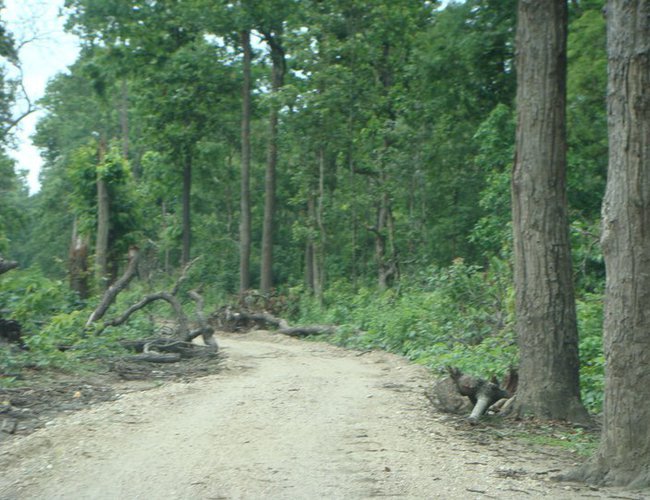
- Nijgadh International Airport or Nijgadh Trees, Elephants and Biodiversity?
√ Nijgadh International Airport!
- Chitwan National Park Preservation or Rail Through the Park
√ Rail through Chitwan National Park
- Langtang National Park Preservation or Chinese Rail through Rasuwa and the Park
√ Chinese Rail through Rasuwa and Langtang National Park
Every time, when a national discourse is pitched as Development vs Environment, Development wins hands down, always!
Development promised Prosperity for All while Environment does not really deliver anything tangible in benefits?!
Those are the Facts of Perception!
Yet a growing, vociferous crowd of articulate Nepalese with influence far in excess of their voting numbers is raising the stakes of Big Development Projects with uncomfortable questions of environmental disasters, livelihoods loss, costs exceeding benefits, who actually gains among the Nepalese, and who loses; will the promises actually materialize: what is the track record of governance of the deliverance of benefits of Development in Nepal?
I propose to analyze some of these metanarratives of counter-discourses challenging the feverish and triumphant boosterism of development advocates who insinuate that such critics are anti-national, dollar-driven, and irresponsible as in Arun III cancellation causing us decades of load-shedding. Is the national development with prosperity slogan of the super majority government and their backers the panacea and ambrosia for all problems in Nepal?
“Agricultural Development”
One of biggest and longest metaprojects of Development in Nepal has been the investment of the nation’s political and economic capital in Agriculture for the overweening reasons such as the occupation of 90% of the people, then in 1950s; and, in the macroeconomic model of modernization through Industrialization paid for by agricultural surplus, generated by increases in productivity.
It has failed!
In 70 years of national suspended animation by all the holy economic planners, average agricultural annual growth of less than 3% has been underachieved, with no surplus generated to the scale of taking off the industrial sector, and certainly not enough to absorb the burgeoning mass of young people who have been absorbed at marginal scales in the service sector while the overwhelming numbers, 2 million in 2011 census, and up to one member per household in later surveys, have been forced to seek their fortunes outside Nepal.
So if Nepal’s Development by all sorts of political dispensation over 70 years have failed, how can we expect a mega project like the Nijgadh International Airport, whose estimated budget is bigger than the entire Nepal’s national budget, to succeed?
Apologists for Development can point to Incremental development all around; for instance, the nearly doubling of Human Development Index values for Nepal from 0.22 to 0.54 over the last 30 years, but the Ranking has stayed stubbornly behind 140 in the community of 194 nations.
Yes, are we to be satisfied by just Incremental development, i.e., we are better off than before; or should we not ask, if we could be most efficiently developed, say like India and China, our immediate neighbors.
In the 1940s, before Nepal embarked on the great project of national modernization and development and westernization, which were synonymous to most, after we threw the yokels of Rana autocracy in 1950s and opened ourselves to the world beyond India, Nepal-India-China farmers were almost in identical situations with crushing poverty for 80-90% of the population, baggage of colonial rule, lack of infrastructure and national capital, non-existent industrial sector, and extraordinary social and political conflict issues. Now look at 2018, China is the largest economy of the world and India is the 11th, exceeding that of France and Nepal isstill in the doldrums of backwardness. China likes to play modest by pointing that its per capita income of $8000 is nowhere near $25000+ of the USA and India too has $1600 and Nepal has just eked the $1000 bar.
How come?
Big Big deficit in Governance Efficiency, whether it is failure to use the $4 billion Nepal Earthquake Rehab pledge or even the frustrating inaction over Rani Pokhari or Kasthamandap Rehab while foreign aided rehabs of Basantpur Durbars or Durbar Schools are progressing swimmingly.
Misgovernance is partly the political economy of global choices with the poorest in money and political capital forced to choose quick return enrichment of a narrow cabal of the well-connected at the cost of the larger weal. So from Monarchy, Rana Oligocracy to Panchayat and the Multipartyelite capture by rural feudocracy, the rest of the population has had to march outside the pale of any meaningful development returns. This is true of not only Nepal but of many so called Third World countries now euphemistically called as Least Developing Countries who continue to stagnate in the back rows of the community of nations while their leaders become super rich.
Deeply grounded misgovernance often means the nation’s so-called international commitment to multilateral environmental agreements such as the Conventional on Biological Diversity, United Nation’s Framework Convention on Climate Change are limited to hollow forms of glossy reports, cosmetic changes in law and administration, and further oppression of the voiceless, but when it comes to big payoffs and kickbacks from Melemchi, Nijgadh, new capital in Sal forests, or cutting forests for rails and transmission lines, all that commitment to Green Economy, Carbon sequestration, or anti-desertification, to the international community or the prospect of drought famine, increased vulnerability to natural disasters or environmental out migration are quite acceptable trade-offs that can happen after all those who have enriched themselves for seven generations have gone, and there is no punishment for the powerful. Impunity in the name of social harmony is our National Dharma!













